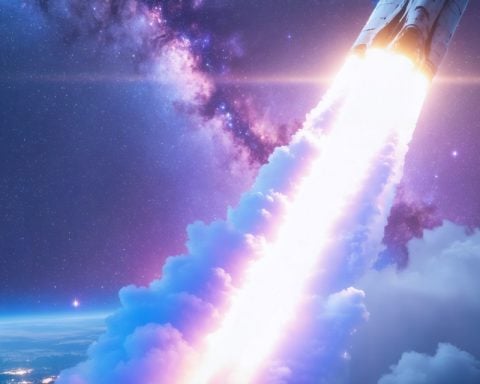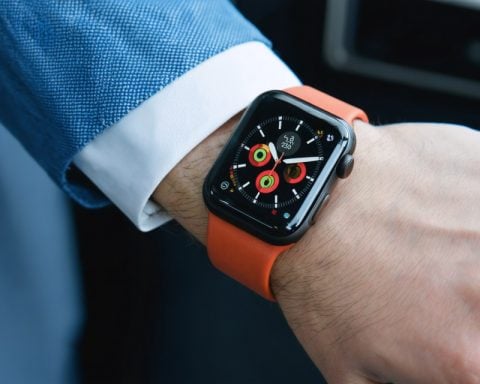- Asteroid 2024 YR4, with a width of up to 300 feet and a speed of 38,000 mph, poses no global threat despite its impressive size and velocity.
- First detected in December 2024 by the Asteroid Terrestrial-impact Last Alert System in Chile, YR4’s trajectory continues to be observed by astronomers.
- YR4 will remain under scientific monitoring until April 2025 and is expected to return to observation in June 2028.
- The James Webb Space Telescope is set to study the asteroid in March, enhancing our understanding of its characteristics.
- YR4’s journey emphasizes Earth’s vigilant monitoring systems and invites reflection on the wonders of the universe.
Shrouded in the vast blanket of the cosmos, Asteroid 2024 YR4 hurtles through space, a celestial visitor that has captured the attention of scientists and sky watchers alike. Stretching up to 300 feet wide and with a speed that eclipses earthly speeds—zooming at a jaw-dropping 38,000 mph—this space rock is no mere pebble. Yet, for all its size and velocity, it poses no global threat; its colossal journey through space promises only local mischief if it were ever to collide with our planet.
The alertness of astronomers at the Asteroid Terrestrial-impact Last Alert System in Chile brought this mystery to light on a quiet December day in 2024. Ever since, the scientific community’s gaze has fastened onto this wandering giant, uncovering its secrets from vast distances. With telescopes poised to study YR4’s cosmic trajectory, observations will continue unabated until the asteroid slips into obscurity by April, its celestial dance veiled until June 2028 returns it to our watchful eyes.
Eager to decode more of the asteroid’s enigmatic story, the James Webb Space Telescope is set to lock its powerful lenses onto YR4 in March, promising insights and data rivaling science fiction tales. As humanity reflects on YR4’s journey across our night sky, a key point echoes amidst the stars: while this space rock may be a temporary wanderer, it is a testament to Earth’s ever-watchful guardians and an invitation to marvel at the endless mysteries of the universe.
This celestial ballet reminds us of our fragile perch in the cosmos, urging reflection on the remarkable dance of celestial bodies and our place within the universe’s grand design.
The Astounding Dance of Asteroid 2024 YR4: What You Need to Know
Insights & Predictions
Asteroid 2024 YR4’s appearance has captivated scientists due to its size and speed. Anticipations are high as the James Webb Space Telescope gears up to study the asteroid, promising groundbreaking insights. These observations could enhance our understanding of asteroid composition, movement, and potential Earth interactions. Experts predict that such missions will continue refining asteroid detection technologies and impact prediction models.
Real-World Use Cases
The study of celestial bodies like Asteroid 2024 YR4 is not merely academic; it serves multiple real-world purposes:
1. Planetary Defense: Understanding asteroids’ trajectories helps develop systems to prevent potential impacts with Earth.
2. Space Exploration: Analyzing asteroids can aid in mining for essential elements and resources not readily available on Earth.
3. Astrophysics Research: Provides insights into the formation and evolution of the solar system.
Security & Sustainability
The sustainability of Earth in the face of potential asteroid impacts is a critical concern. Programs like the Near-Earth Object Observations (NEOO) and the Asteroid Terrestrial-impact Last Alert System (ATLAS) are vital in monitoring space threats. Moreover, international collaboration emphasizes developing effective planetary defense strategies and ensuring a secure future.
Features, Specs & Pricing
While the asteroid itself isn’t a product for sale, the technologies and telescopes used in observation demand investment. The James Webb Space Telescope, for instance, is an advanced tool with significant costs but offers invaluable returns in planetary science and exploration capabilities.
Controversies & Limitations
Astronomical detection systems face several challenges, such as:
– Funding Constraints: Ensuring adequate investment in these technologies can be difficult due to competing financial priorities.
– Detection Limitations: Small but potentially dangerous asteroids might still evade current detection technology.
These issues highlight the need for improved and innovative methods to keep pace with celestial threats.
Pros & Cons Overview
Pros:
– Enhances Scientific Knowledge: Studying asteroids enriches our understanding of the universe.
– Supports Technological Advancements: Drives innovation in space observation and defense technologies.
– Global Collaboration: Promotes international cooperation in addressing universal threats.
Cons:
– Resource Intensive: Requires substantial funding and resources.
– Risk Management: Incomplete detection means a latent threat may go unnoticed until it’s too late.
Tutorials & Compatibility
Utilizing software and databases like NASA’s Eyes on Asteroids can help enthusiasts track and understand asteroid activity. Educational platforms provide tutorials, offering insights into using these tools effectively.
Actionable Recommendations
1. Stay Informed: Follow updates from reputable sources like NASA or the European Space Agency to stay informed about celestial events.
2. Engage with Astronomy: Participate in local astronomy clubs or online forums to discuss and learn more about asteroids and other celestial phenomena.
3. Leverage Technology: Use apps and software to track asteroids and celestial bodies, fostering a deeper personal connection to space exploration.
For additional resources and updates on space explorations and asteroid studies, visit NASA and ESA.
By observing and engaging with celestial occurrences such as Asteroid 2024 YR4, we continue to expand our understanding of the universe, sparking curiosity and fortifying our defense mechanisms against potential extraterrestrial threats.



















